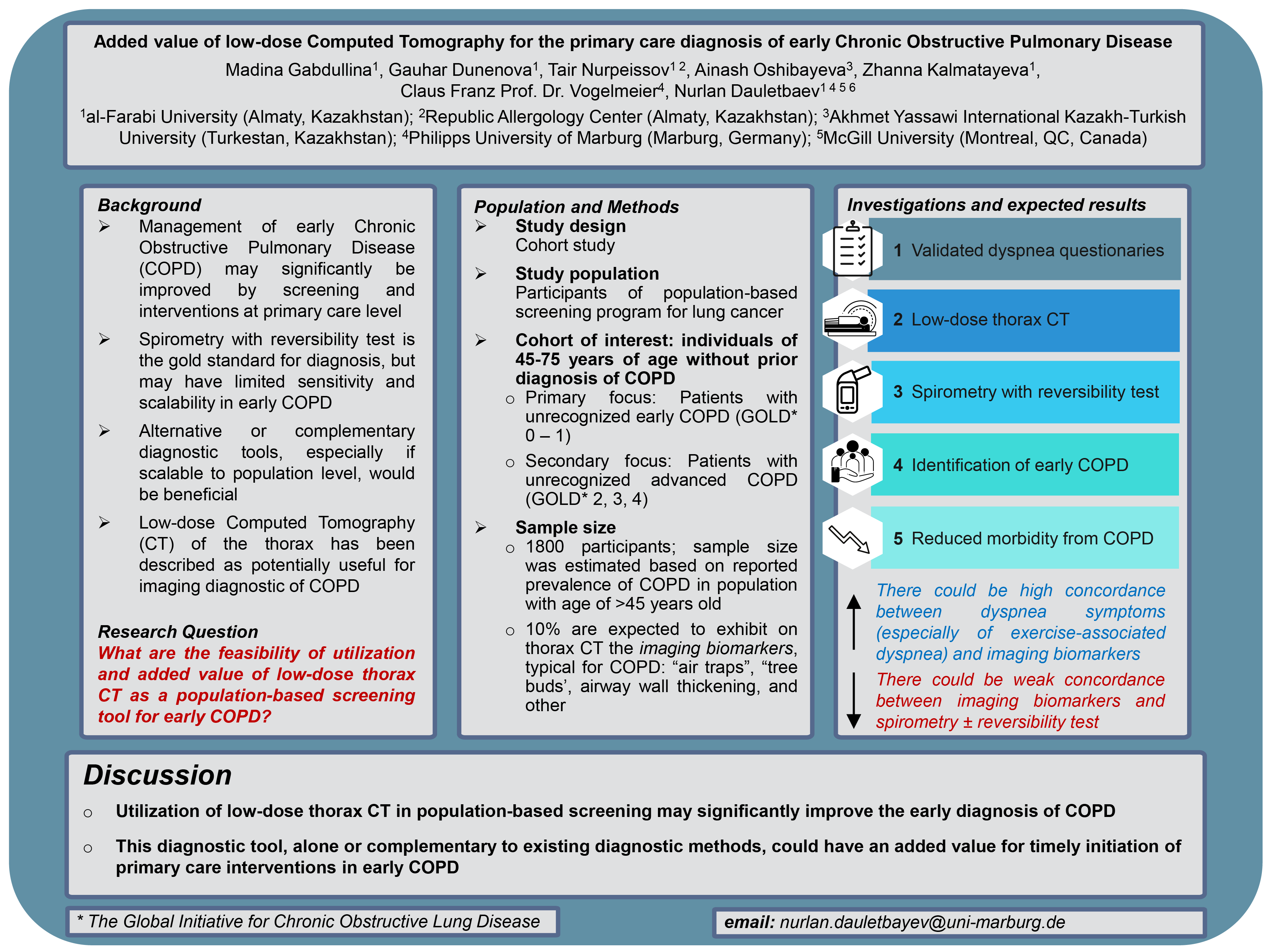SRFP004: Added value of low-dose Computed Tomography for the primary care diagnosis of early Chronic Obstructive Pulmonary Disease
Madina Gabdullina; Gauhar Dunenova, MD, MPH; Tair Nurpeissov, MD, PhD; Ainash Oshibayeva, MD, PhD, MSPH; Zhanna Kalmatayeva, MD, PhD; Claus Franz Prof. Dr. Vogelmeier, MD; Nurlan Dauletbaev, MD, PhD
Context: Chronic Obstructive Pulmonary Disease (COPD) is defined by progressive non-reversible airflow obstruction and chronic pulmonary inflammation. The great majority of the patients are managed by primary care providers. Population-based screening, geared to primary care, could markedly improve early recognition of COPD. Spirometry with the reversibility test remains the gold standard for diagnosis, but may have limited scalability due to the access and throughput issues. Alternative diagnostic tools, especially if scalable to population level, would be beneficial for timely interventions in COPD. Low-dose Computed Tomography (low-dose CT) has been described as potentially useful for imaging diagnostic of COPD. Its value in population-level screening is unclear, especially in recognition of early COPD. Objective: To evaluate the feasibility and added value of low-dose CT as the population screening tool for early COPD. Study Design: Cohort study. Setting: The participant recruitment will take place in the population-based setting. Population Studied: We will include the individuals who will participate in population-based screening programs for lung cancer that will include low-dose CT. As a general inclusion criterion, we will consider individuals without prior diagnosis of COPD. These could include the patients with unrecognized early COPD (GOLD0-1) or the more advanced stage. Given the age prevalence in COPD, our focus will be on participants of 45-75 years of age. The sample size has been estimated at 1,800 (both sexes), given the literature estimates of population prevalence of COPD ranging between 5% and 15%. Intervention: Participants will be interviewed using validated questionnaires for smoking history, and signs of dyspnea at rest or during exercise. Then, participants will undergo the low-dose thorax CT. Finally, spirometry and reversibility test will be carried out in all participants. Expected Results: We anticipate to observe the imaging biomarkers of COPD (“air traps”, “tree buds”, thickening of the walls of the bronchi and bronchioles, etc) in about 10% of the participants. There should be high agreement with validated questionnaires for dyspnea, especially during exercise. The agreement with the spirometry may be less pronounced and be dependent on COPD stage as a covariate. Conclusion: Besides validated questionnaires, COPD screening via low-dose CT could have an added value for the timely primary care diagnosis of early COPD

Jack Westfall
jwestfall@aafp.org 11/21/2021Great poster and abstract. Thanks for sharing at NAPCRG